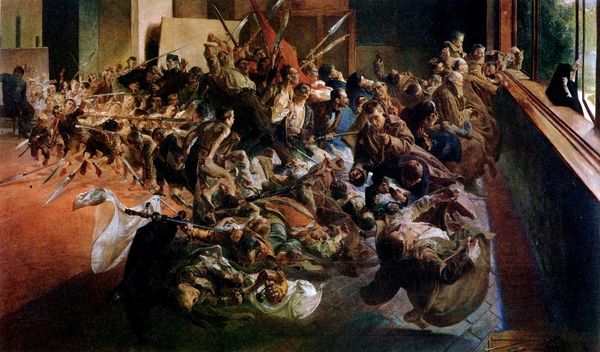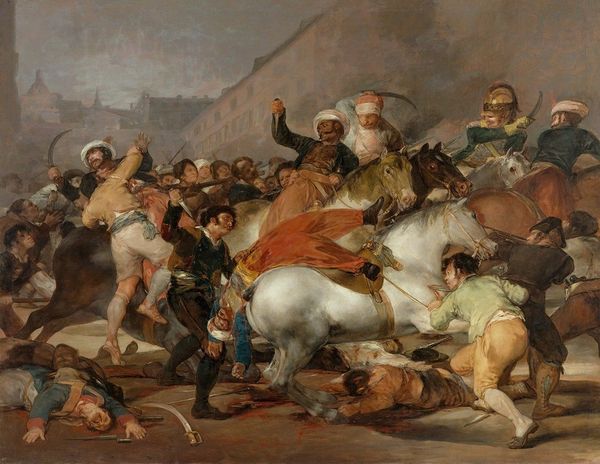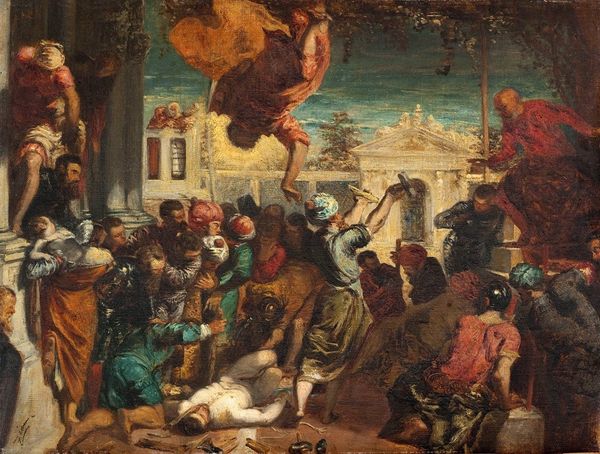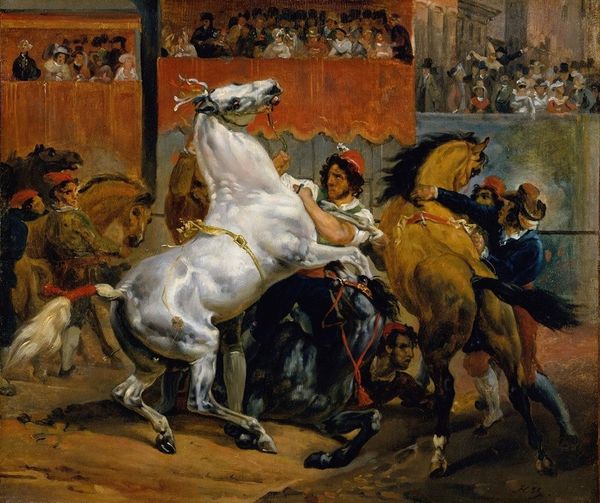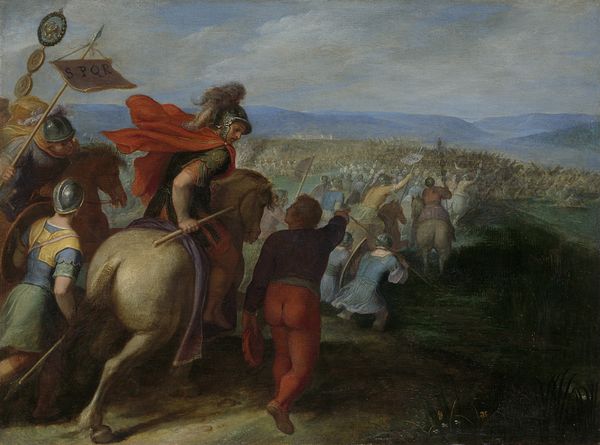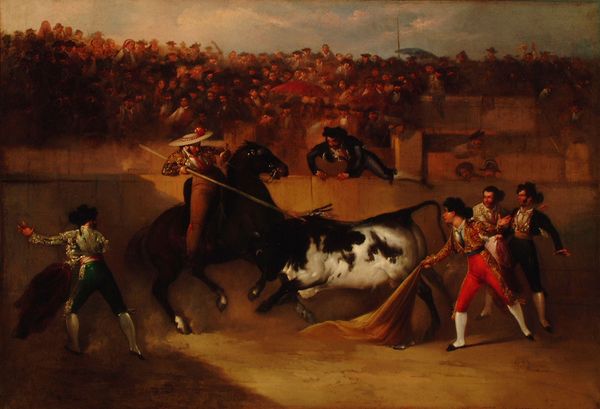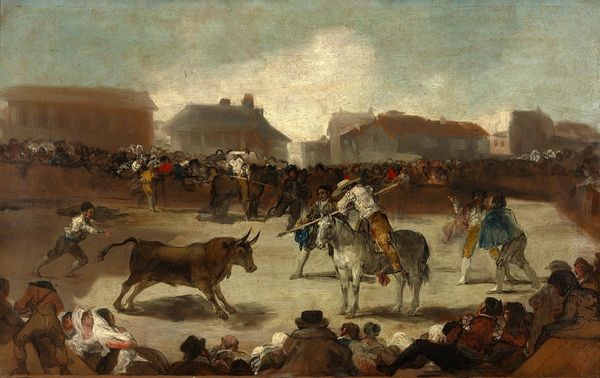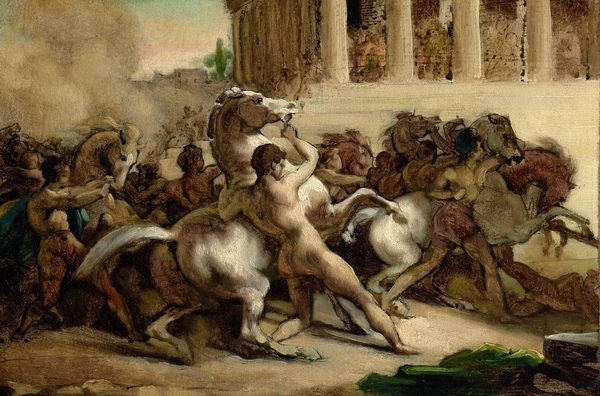
painting, oil-paint
#
figurative
#
painting
#
oil-paint
#
landscape
#
figuration
#
oil painting
#
romanticism
#
genre-painting
#
history-painting
Copyright: Public Domain: Artvee
Editor: So here we have Théodore Géricault's "Riderless Racers at Rome" from 1817, done in oil paint. My first impression is a sort of controlled chaos—you've got the wild energy of the horses and the crowd juxtaposed with what looks like a very structured space. What do you see in this piece? Curator: Chaos elegantly framed, wouldn't you say? For me, this painting bursts with the nervous energy of the Romantic era. Géricault captures that fascination with primal emotion, that tension between order and unbridled instinct. You see these riderless horses, manes flying, eyes wide – almost mirroring the emotional turbulence of the time. And it's interesting, isn't it, how he places the spectators, the civilised world, just above the frenzied action, almost voyeuristic? Does that framing device suggest something to you? Editor: Maybe a comment on society's relationship with its more…untamed impulses? Almost like they're observing something they can't quite control? Curator: Precisely. This Agony and the Ecstasy narrative reflects the Romantic spirit. There’s something profoundly honest in admitting this. He isn’t afraid to show these competing human drives! So we have a thrillingly complex human drama. What do you make of the subdued, almost melancholic color palette against such a spirited subject? Editor: I guess that adds to the overall feeling of tension – it's not a bright, celebratory scene, more like a raw, visceral experience. Something deeper than mere spectacle. I had never thought about it this way, very interesting! Curator: Well, these horses continue to carry the riders within our own selves in perpetuity.
Comments
No comments
Be the first to comment and join the conversation on the ultimate creative platform.
